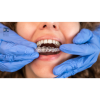Adult braces at age 30+: What do you need to know?

Once you reach the age of 30 and beyond, many people begin to pay more attention to their oral health and appearance. This is especially true for those dealing with crowded teeth, gaps, or teeth that have shifted due to the loss of permanent teeth. This article will answer all your questions about adult orthodontics, including suitable treatment options and how to prepare for the best results.
Can you still get braces after 30?
The answer is yesyou can definitely get braces! Even as you age, your teeth and jawbone can still move with the pressure applied by orthodontic appliances.
Changes in bones and teeth in adulthood
As you get older, the jawbone may become slightly denser, causing tooth movement to be a bit slower than in teenagers. However, this is not an obstacle to getting braces.
The differences between teenage braces and adult braces
- Teens: The bones are still developing and flexible, making tooth movement easier and faster.
- Adults: May have issues like gum disease, tooth decay, or missing teeth, requiring a combined treatment plan.
Reasons why people over 30 should consider getting braces
- For long-term oral health: Well-aligned teeth help reduce plaque buildup and lower the risk of gum disease and tooth decay.
- Boost confidence and appearance: Straight teeth improve your overall appearance, enhancing opportunities in both career and personal life.
- Adjust age-related dental changes: Helps correct shifting teeth, tipped teeth, or bite issues that can affect chewing and oral health.
Which type of braces is best for adults?
For those aged 30 to 40 and beyond, there are several suitable orthodontic options available. The best choice depends on individual needs and budget. Popular options for adults include:
- Invisalign Clear aligners
- Lingual braces (Brava By Brius)
- Damon braces
- Ceramic braces
Comparison table of pros and cons for each type
| Types of braces | Benefits | Drawbacks |
| Clear aligners (Invisalign) |
|
|
| Damon braces |
|
|
| Ceramic braces |
|
|
| Lingual braces (Brava by Brius) |
|
|

How to prepare for adult braces?
For adults considering braces, preparing for treatment involves several important steps. These include a thorough oral health check, addressing any existing dental or gum issues, and carefully planning the treatment timeline and costs. Good preparation helps ensure a smooth process and the best possible results.
1.Dental and gum health check
Adults should undergo a thorough oral examination to assess the health of their teeth and gums. The dentist will check for cavities, gum inflammation, shifting teeth, or other issues that may affect orthodontic treatment.
2.Treat any gum disease or tooth decay first
Before starting orthodontic treatment, any gum disease, tooth decay, or other dental problems should be fully treated. Ignoring these issues can increase the risk of complications during treatment, such as loose teeth, gum recession, or infections.
3.Plan the treatment timeline and costs
Consult with your orthodontist to create a treatment plan that fits both your expected duration and budget. Ask about payment plan options if needed, so you can prepare financially in advance.

Does getting braces as an adult hurt? How long does it take?
For adults planning orthodontic treatment, the most common questions are: Will it hurt at my age? And how long will it take? The truth is, the level of discomfort and treatment duration vary by case, but both can be managed and controlled with modern orthodontic technologyespecially when choosing a method suited to your age and dental condition.
Average level of discomfort
In general, adult braces may cause mild discomfort or slight pain during the initial placement and after each adjustment. These symptoms usually subside within 3 to 7 days. Appliances designed to reduce friction, such as Invisalign or Damon braces, can significantly minimize discomfort compared to traditional braces.
Factors affecting treatment duration
The length of orthodontic treatment depends on several factors, including:
- The complexity of the dental issues (e.g., crowding, gaps, or tipped teeth)
- Age and jawbone condition
- Type of braces used
On average, adults require 18 to 30 months of treatment. However, cases with complex problems or additional procedures, such as dental implants, may take longer.
Tips for living with braces
For adults planning orthodontic treatment, lifestyle adjustments during treatment are important to prepare for. This includes caring for the braces, managing work routines, and adapting to changes in eating and speaking habits. Proper preparation will help ensure a smooth treatment process with minimal impact on daily life.
Caring for braces
Keeping your braces clean is essential to prevent plaque buildup and reduce the risk of tooth decay or gum inflammation.
- Clear aligners (Invisalign): Remove daily to brush teeth and clean the aligners
- Metal/Ceramic/Brava braces: Use a special toothbrush and dental floss designed for braces wearers
Impact on work and daily life
Many adults often worry whether braces will affect their work. In general:
- Invisalign and Brava: Do not affect appearance, ideal for those who meet people regularly or have speaking-related jobs.
- Metal/Ceramic braces: The appliances may be slightly visible, but they generally do not impact long-term work performance.
Adjusting to food and speech
- Food: Avoid hard, sticky, or crunchy foods that could damage the appliances.
- Speech: There may be some initial impact on pronunciation. Invisalign and Damon usually cause minimal issues, while Brava and other lingual appliances may require a short adjustment period.
Orthodontic treatment with dental implants or missing teeth
For adults seeking orthodontic treatment who have dental implants or missing teeth, theres no need to worry. Dentists can create a personalized treatment plan that combines braces with dental implants or other solutions to achieve a beautiful alignment and long-term functionality.
Orthodontic treatment combined with dental implants
- The remaining teeth can be repositioned to create the ideal spacing for dental implants.
- If implants have already been placed, the orthodontist will design a treatment plan that does not affect the existing implants.
- In some cases, braces may be needed before implant placement to prepare the necessary space.
Options when some teeth are missing
- Braces combined with a dental bridge: Suitable for those who prefer not to have dental implants.
- Removable dentures: Used temporarily during orthodontic treatment.
- Leaving the space open: In some cases, the orthodontist may leave the space temporarily before considering permanent restoration options.
Frequently Asked Questions (FAQ) about Adult Braces
At what age is it too late to get braces?
There is currently no age limit for getting braces. As long as your teeth and gums are healthy, you can have orthodontic treatmenteven at age 50 or older. If you have gum disease or loose teeth, these issues must be treated before starting braces.
Will getting braces change my facial structure?
Your facial structure may change for the better, especially in cases of bite misalignment or tipped teeth. Braces can help adjust the position of the teeth and jawbone, resulting in a more balanced facial appearance. However, the degree of change depends on each individual and the specific dental issues involved.
Can braces help with tipped teeth after tooth extraction?
Braces can help correct tipped teeth after tooth extraction. The orthodontic appliances will gradually move the tilted or misaligned teeth back into their proper positions to restore the bite and create space for new teeth or dental implants as part of the treatment plan.


